Music
Trailers
DailyVideos
India
Pakistan
Afghanistan
Bangladesh
Srilanka
Nepal
Thailand
StockMarket
Business
Technology
Startup
Trending Videos
Coupons
Football
Search
Download App in Playstore
Download App
Best Collections
Srilanka
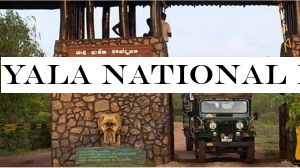
The Yala National Park will be closed for September and October to repair its roads and ponds and for insemination activities of its animals. The Zones 1 and 2 of Yala will be closed, while the Zones 4 and 5 and the Udawalawa Park will be open for the visitors.The closed areas will be reopened on November 1.
- Details
- Category: Srilanka
Read more: Yala National Park partially closed
Write comment (98 Comments)
The construction works of the Fisheries Harbor in Point Pedro were commenced under the patronage of President Maithripala Sirisena, today (30). The proposed fisheries harbor established as part of the Northern Province Sustainable Fisheries Development Project with theobjective of providing livelihood opportunities in the Northern peninsula. Point Pedro Fisheries Harbor will be the largest fisheries harbour in the country and the estimated project cost is Rs.12,600 million. Minister P. Harrison, Abdul Haleem, the Governor of the Northern Province Suren Raghavan, Angajan Ramanathan, Cadar Mastan, M. A. Sumanthiran, Mavai Senathirajah, Dharmalingam Siddarthan, peoplerepresentatives in the area, Secretary to the President Udaya R. Seneviratne, public servants and others participated on this occasion.
- Details
- Category: Srilanka
Read more: Construction of Point Pedro Fisheries Harbor commenced
Write comment (97 Comments)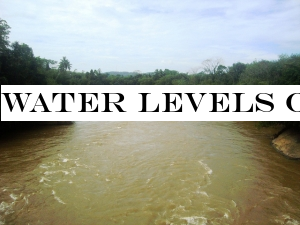
The Department of Irrigation has warned that the water level of the Kalu, Gin and Kelani rivers are currently rising to ‘Flood Level&.Owing to the downpours affecting the areas in the proximity of Kalu River, the water level of the river has reached the spill level from Ratnapura area, the Irrigation Department said further.
- Details
- Category: Srilanka
Read more: Water levels of Kalu, Gin and Kelani rivers on the rise
Write comment (90 Comments)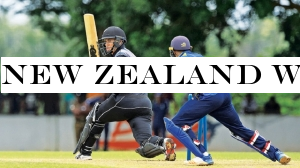
Colin Munro produced a vintage show at FTZ grounds Katunayake ahead of the three-match T20I series against Sri Lanka, hitting 48 off 27 balls and having to retire as New Zealand won their warm-up T20 match against Sri Lanka Cricket PresidentXI by 33 runs yesterday.New Zealand batting first totalled 168-6 and restricted the SLC PresidentXI to 135-9.Munrowas the first wicket to fall, but by then, he&d been responsible for nearly 70% of the New Zealanders& total and had put them comfortably ahead of the game. That luxury eventually proved a necessity because, having opted to bat, the visitors slipped from 69 for 0 to 84 for 3 as legspinner Wanindu Hasaranga gave them a reminder of the kind of problems they will face when the T20I series begins in Pallekele on Sunday.
- Details
- Category: Srilanka
Read more: New Zealand wins T20 warm-up
Write comment (98 Comments)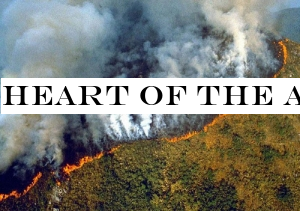
São Paulo, Brazil (CNN)Brazil's President Jair Bolsonaro has banned the use of fire to clear land throughout the country for 60 days, in response to the massive increase in blazing fires in the Amazon rainforest that has caused international outrage.
According to an official decree, which was released on Thursday morning, the ban started on Wednesday -- the day it was signed.The practice of burning land in rural areas is common among farmers, who will often use fires to clear the land for new crops or livestock.Bolsonaro has repeatedly insisted the Amazon should be opened to development and has defunded the agencies responsible for cracking down on illegal activity.Experts say his pro-development policies and lax regulation have led to ranchers and farmers burning the rainforest for purposes of cultivation and farming.Brazilian President Jair Bolsonaro banned the use of fire to clear land throughout Brazil on Wednesday.Brazilian President Jair Bolsonaro banned the use of fire to clear land throughout Brazil on Wednesday.The ban comes after scientists warned that fires which have been raging at a record rate in Brazil's Amazon rainforest, could strike a devastating blow to the fight against climate change.The Amazon, which spans eight countries and covers 40% of South America, is often referred to as "the planet's lungs" because estimates show that nearly 20% of oxygen produced by the Earth's land comes from rainforest. The Amazon also puts an enormous amount of water into the atmosphere at a time when cities are drying up.Despite environmentalists pointing the finger at Bolsonaro, Brazil's populist pro-business President who is backed by Brazil's so-called beef caucus, he has dismissed accusations of responsibility for the fires and declared last week that he would send 43,000 troops to combat the inferno.The Amazon is burning because the world eats so much meatThe Amazon is burning because the world eats so much meatHe also announced on Wednesday that South American leaders will meet on September 6 in Colombia to discuss policy surrounding the situation in the Amazon, according to Brazilian state news agency Agencia Brasil.According to Agence France-Presse news agency, on Thursday United Nations Secretary-General António Guterres urged the globe to do more to tackle the Amazonian fires."We are strongly appealing for the mobilization of resources and we have been in contact with countries to see whether, during the high-level session of the General Assembly, there could be a meeting devoted to the mobilization of support to the Amazon," Guterres told reporters from an African development conference in Japan, according to AFP.Guterres stressed that "until now, we have not done enough, we need to do all together more than we have done in the past," and called the situation "very serious."War of wordsEarlier this week, Brazil escalated its war of words with global powers over the Amazon fires, which number over 80,000 this year.The special communications office for Bolsonaro told CNN on Tuesday morning that Brazil would turn down the $20 million aid offer that was pledged for the Amazon at the G7 summit in France the day before.Bolsonaro's ego stands in the way of saving the AmazonBolsonaro's ego stands in the way of saving the AmazonHowever, just an hour later, Bolsonaro appeared to cast doubt on the matter. "Did I say that? Did I? Did Jair Bolsonaro speak?" he asked reporters outside the presidential residence.The Brazilian President has since softened his stance on the financial aid, suggesting that he would consider the G7's aid if Macron apologizes for accusing Bolsonaro of "lying" to him about climate commitments during trade negotiations.The nation has also since accepted $12 million in aid from the UK government, which is a member of the G7.
The Amazon in Brazil is on fire - how bad is it?By The Visual and Data Journalism TeamBBC News28 August 2019Share this with Facebook Share this with Messenger Share this with Twitter Share this with Email ShareRelated TopicsAmazon firesImage copyrightAMNESTY INTERNATIONALThousands of fires are ravaging the Amazon rainforest in Brazil - the most intense blazes for almost a decade.
The northern states of Roraima, Acre, Rondônia and Amazonas have been particularly badly affected.
Huge fires have also been burning across the border in Bolivia, devastating swaths of the country's tropical forest and savannah.
So what's happening exactly and how bad are the fires?
There have been a lot of fires this yearBrazil - home to more than half the Amazon rainforest - has seen a high number of fires in 2019, Brazilian space agency data suggests.
The National Institute for Space Research (Inpe) says its satellite data shows an 77% increase on the same period in 2018.
The official figures show more than 83,000 forest fires were recorded in Brazil in the first eight months of the year - the highest number since 2010. That compares with 47,000 in the same period in 2018.
Nasa, which provides Inpe with its active fire data, confirmed recordings from its satellite sensors also indicated 2019 had been the most active year for almost a decade.
However, 2019 is not the worst year in recent history. Brazil experienced more fire activity in the 2000s - with 2005 seeing more than 133,000 fires in the first eight months of the year.
Forest fires are common in the Amazon during the dry season, which runs from July to October. They can be caused by naturally occurring events, such as lightning strikes, but this year most are believed to have been started by farmers and loggers clearing land for crops or grazing.
There had been a noticeable increase in large, intense, and persistent fires along major roads in the central Brazilian Amazon, said Douglas Morton, head of the Biospheric Sciences Laboratory at Nasa's Goddard Space Flight Center.
The timing and location of the fires were more consistent with land clearing than with regional drought, he added.
Image copyrightGETTY IMAGESActivists say the anti-environment rhetoric of Brazilian President Jair Bolsonaro has encouraged such tree-clearing activities since he came into power in January.
In response, Mr Bolsonaro, a long-time climate change sceptic, accused non-governmental organisations of starting the fires themselves to damage his government's image.
Leaders of the G7 have pledged $22m (£18m) to help tackle the crisis, but Mr Bolsonaro ruled out accepting the cash over a row with French President Emmanuel Macron on Brazil's climate and biodiversity commitments.
However, Brazil has deployed 44,000 soldiers to combat the fires as well as environmental crimes in the Amazon, the country's authorities said.
What about Bolivia's fires?Amazon fires a global crisis, says Macron'Football pitch' of Amazon forest lost every minuteThe north of Brazil has been badly affectedMost of the worst-affected regions are in the north of the country.
Roraima, Acre, Rondônia and Amazonas all saw a large percentage increase in fires when compared with the average across the last four years (2015-2018).
Roraima saw a 141% increase, Acre 138%, Rondônia 115% and Amazonas 81%. Mato Grosso do Sul, further south, saw a 114% increase.
Amazonas, the largest state in Brazil, has declared a state of emergency.
Brazil fires prompt 'prayers' for Amazon rainforestBrazil's Bolsonaro dismisses deforestation data as 'lies'Deliberate deforestation?The recent increase in the number of fires in the Amazon is directly related to intentional deforestation and not the result of an extremely dry season, according to the Amazon Environmental Research Institute (Ipam).
Ipam's director Ane Alencar said fires were often used as a way of clearing land for cattle ranches after deforesting operations.
"They cut the trees, leave the wood to dry and later put fire to it, so that the ashes can fertilise the soil," she told the Mongabay website.
Image copyrightPLANET LABS INCWhile the exact scale of deforestation in the rainforest will only be certain when 2019 figures are published at the end of the year, preliminary data suggests there has been a significant rise already this year.
Monthly data shows the scale of the areas cleared has been creeping up since January, but with a spike in July this year - almost 278% higher than in July 2018, according to Inpe.
Inpe tracks suspected deforestation in real-time using satellite data, sending out alerts to flag areas that may have been cleared.
More than 10,000 alerts were sent out in July alone.
The record number of fires also coincides with a sharp drop in fines being handed out for environmental violations, BBC analysis has found.
Image copyrightGETTY IMAGESThe fires are emitting large amounts of smoke and carbonPlumes of smoke from the fires have spread across the Amazon region and beyond.
According to the Copernicus Atmosphere Monitoring Service (Cams), a part of the European Union's Earth observation programme, the smoke has been travelling as far as the Atlantic coast.
Image copyrightPLANET LABS INCImage captionSome of the fires, such as this one in Pará, Brazil, cover a number of acresIt has even caused skies to darken in São Paulo - more than 2,000 miles (3,200km) away.
The fires have been releasing a large amount of carbon dioxide, the equivalent of 228 megatonnes so far this year, according to Cams, the highest since 2010.
They are also emitting carbon monoxide - a gas released when wood is burned and does not have much access to oxygen.
Maps from Cams show this carbon monoxide - a pollutant that is toxic at high levels - being carried beyond South America's coastlines.
The Amazon basin - home to about three million species of plants and animals, and one million indigenous people - is crucial to regulating global warming, with its forests absorbing millions of tonnes of carbon every year.
But when trees are cut or burned, the carbon they are storing is released into the atmosphere and the rainforest's capacity to absorb carbon is reduced.
How is the Amazon helping to limit global warming?There were more fires in the mid-2000sWhile the number of fires in Brazil is at its highest level for almost a decade, the data suggests that Brazil - and the wider Amazon region - has experienced more intense burning in the past.
An analysis of Nasa satellite data this month indicated that the total fire activity in 2019 across the Amazon, not just Brazil, is close to the average when compared with a longer 15 year period.
Figures from Brazil's Inpe, dating back to 1998, also show the country suffered worse periods of fire activity in the 2000s.
This is backed by numbers from Cams, which show total CO2 equivalent emissions - used to measure of the amount and intensity of fire activity - were also higher in Brazil the mid-2000s.
Other countries have also been affectedA number of other countries in the Amazon basin - an area spanning 7.4m sq km (2.9m sq miles) - have also seen a high number of fires this year.
Venezuela has experienced the second-highest number, with more than 26,000 fires, with Bolivia coming in third, with more than 19,000. This is a rise of 92% on last year. Peru, in fifth place, has seen a rise of 105%.
The size of the fires in Bolivia is estimated to have doubled since late last week. About one million hectares - or more than 3,800 square miles - are affected.
Bolivia has hired a Boeing 747 "supertanker" from the US to drop water, and accepted an offer of aid from G7 leaders.
Extra emergency workers have also been sent to the region, and sanctuaries are being set up for animals escaping the flames.
South American countries are planning to meet in the Colombian city of Leticia next week to discuss a co-ordinated response to the fires.
- Details
- Category: Srilanka
Read more: Heart of the Amazon fires
Write comment (92 Comments)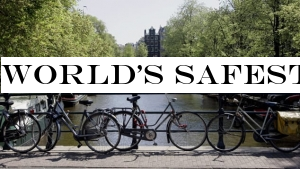
The Economist Intelligence Unit's 2019 Safe Cities Index (SCI) ranks 60 cities across the world for digital security, health security, infrastructure and personal safety. At number 10 on the list is Melbourne, Australia. Click through to see which city made it to the top.Darrian Traynor/Getty Images(CNN) — What makes the perfect city break? A trip to a museum or three, visiting the landmark sites, trying out all the local delicacies, kicking back in the evening at a local bar?Whatever your criteria, one thing's for certain -- you want to travel somewhere where you feel safe and secure.The Economist Intelligence Unit's 2019 Safe Cities Index (SCI) has ranked 60 destinations across the world in terms of their digital security, health security, infrastructure and personal safety.Topping the list is Tokyo. The most populated metropolis on Earth earns a score of 92.0 out of a possible 100.Singapore is hot on its heels in second place with 91.5 and another Japanese metropolis, Osaka, is third, with 90.9. No big shocks there, these cities also made up the top three in the two previous SCI rankings, conducted in 2015 and 2017.European cities including Amsterdam -- busy fighting overtourism issues -- and Copenhagen, known for its picturesque waterside houses and laid back "hygge" lifestyle, also made the top 10, at number four and number eight respectively.The only US city to hit the top 10 was capital Washington DC (number 7), although Chicago just missed out, coming in at number 11.Feeling safedc-segwaysWashington DC is the only US city in the top 10.Chip Somodevilla/Getty ImagesOur understanding of city safety has changed in recent years, the SCI report suggests.With issues such as terrorism and climate change increasingly on people's minds, the index's compilers say it now takes into account the ability of a city to "bounce back" after a natural or man-made disaster.While analyzing a city's resilience, the Safe Cities Index looked at the emergency services available in the city, transport facilities, catastrophe insurance, disaster-risk development and cyber-security preparedness.The European city of Amsterdam is apparently one of Europe's safest spots.The European city of Amsterdam is apparently one of Europe's safest spots.GERRIT DE HEUS/AFP/Getty Images/FILERelated contentWorld's safest country to visit in 2018 revealed by Gallup surveyTokyo also topped the list in terms of its digital security, but Singapore was rated higher for infrastructure security and personal security."The research highlights how different types of safety are thoroughly intertwined," said Naka Kondo, senior editor of The Economist Intelligence Unit and editor of the SCI2019 report.Hong Kong, number 9 on the list in 2017, was down to number 20 this year. The city has been rocked by sometimes violent anti-government protests in the past few months, leading to a decline in visitor numbers.At number 3 on the list is the Japanese city of Osaka.At number 3 on the list is the Japanese city of Osaka.CHARLY TRIBALLEAU/AFP/AFP/Getty ImagesRelated contentTraveling to Hong Kong? Here's what you need to knowCities don't have to be rich to be safe, the report says, although it acknowledges that cities in developing countries tend to appear lower down the list.Bottom of the list, at number 60, is Lagos in Nigeria, with a score of 38.1.Also in the final five are Caracas in Venezuela, Yangon in Myanmar, Karachi in Pakistan and Dhaka in Bangladesh.The world's safest cities for 2019, according to SCI:
1. Tokyo, Japan2. Singapore3. Osaka, Japan4. Amsterdam, the Netherlands5. Sydney, Australia6. Toronto, Canada7. Washington DC, US= 8. Copenhagen, Denmark= 8. Seoul, South Korea10. Melbourne, Australia
-
- Details
- Category: Srilanka
Read more: World's safest city to visit in 2019
Write comment (100 Comments)Page 255 of 392

 12
12





